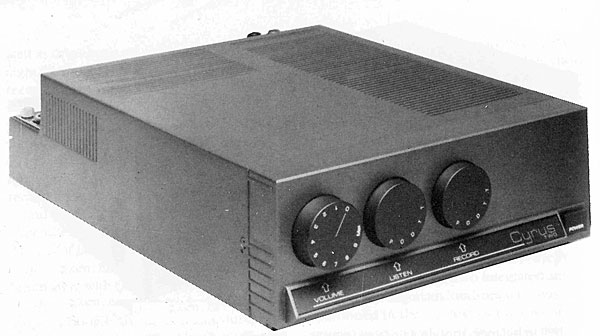Until the 1983 release of the Naim NAIT, integrated amplifiers were thought to be something you bought before you could afford a ‘real’ preamplifier/power amplifier combo. It’s fair to assume that the breed was not well-liked. Instead of presenting low-cost circuitry in a costly cabinet adorned with acres of brushed aluminium and bouncing power meters, the little Naim delivered a lower-calorie version of the circuits found in Naim’s well-regarded 42.5/110 pre-power amp. It wasn’t a puffed-up, low-quality design; Instead, it was a low-cost, high-quality design.
It created a remarkable amount of noise for such a little box (276x205x76mm). Indeed, it’s unlikely that Naim Audio had foreseen this, as the Salisbury firm’s focus at the time was on its strategic alliance with Linn. “With Linn, we intended to provide an entry-level system to serve as a benchmark and assist expose the source-first expenditure mindset within the system hierarchy,” a spokesman said. However, it was the integrated amplifier, not Linn or Naim, that put this £253 box on the audiophile map…
It was designed by business founder Julian Vereker and the Naim production team, and it used a lot of parts from the company parts bin for the shell and internals, though it was saved money by using a cheap volume control knob and a crude trim pot instead of a real balancing control. This only operated on one channel, provided 3dB of attenuation, and appeared as a plastic stalk protruding from the front fascia panel! Despite the switchgear, the NAIT looked and felt like a high-end Naim product – elegant but eccentric.
The single main circuitboard was of good quality and better set out than many amplifiers of the time, with a big custom-made 100VA toroidal power transformer taking up much of it. An superb moving magnet phono stage — the only part of the preamplifier section with RCA phono connectors – was installed, as was a high-quality ALPS volume control potentiometer. The remaining tuner line inputs and tape loop were only available through DIN sockets; even the loudspeaker outputs were banana sockets rather than binding posts back then.
The first Naim NAIT had a peculiar sound to say the least. While the balance control raised a few eyebrows, the Nait’s meagre power output was the big talking point. Some sources claim it was as low as 6W RMS per side, but a trustworthy industry source claims it was 13W RMS per channel into 8 ohms and 19.5W RMS per channel into 4 ohms. It wasn’t much, whatever it was – especially in a decade known for its inefficient loudspeakers.
The Nait sounds incredibly upfront, straight, and lucid, similar to a single-ended tube amplifier, albeit tonally it’s a million miles away from valves. It’s nimble, sharp, and dry, with a slightly bright upper midband and treble — thanks in part to the weak power amplifier component. The amp has a wonderful thrust to it, propelling the sound with a vigor rarely heard in far more expensive amplifiers. It’s a lot of pleasure to listen to, and it seems to be able to reach under the skin of the recording and into the hearts of the performers. It is magnificent in this regard. “It’s full of ‘speed, rhythm, and timing — very musical but short on power,” according to Naim Audio.
One of the NAIT’s most distinguishing characteristics is that, despite its low power, it continues to drive hard until it reaches its maximum capabilities. Even when driving inefficient loudspeakers like Linn Kans, which were popular in the 1980s, the small Naim managed to sound surprisingly composed even at somewhat high volumes. So whatever power it does have is put to good use, allowing it to shift from quiet to loud with relative ease. The Nait doesn’t ‘sit’ on dynamic accents, which, along with its fine transient speed, results in a vibrant listening experience. With this little black box, there’s never a dull time!
The disadvantage is that the first NAIT, more than any of the others, is a polarizing product. While many may enjoy the sonic explosions, others will dislike the steely, transistor-like sound. It lacks a wide range of tonal colors, choosing to make things appear a little too grey. Even if you can live with the restricted power, some may find the game’s general character to be too harsh for their tastes; it’s certainly not something you’d want to curl up with on a cold winter night.
The initial Nait came in two versions, the first with a red LED power light and the second with a green one. It’s an urban legend, at least according to Naim Audio, that the ‘red light’ NAITs sound better! Both models have retained their worth well, with prices ranging from £200 to £400 depending on condition and whether they’ve been serviced lately at the factory. This is something that, by the way, is highly worth doing if you already possess a Nait.
The NAIT 2 was superseded by Naim at the end of the 1980s, and it had a lot more power, a true balancing control, and the (then) new lighted Naim logo. It addressed all of the original’s flaws. But I know some Nait fans who claim the original was the greatest – it was undoubtedly the most focused and seemed to distil down ‘the Naim sound’ more than anything that came after it. A historic product in its own right.







